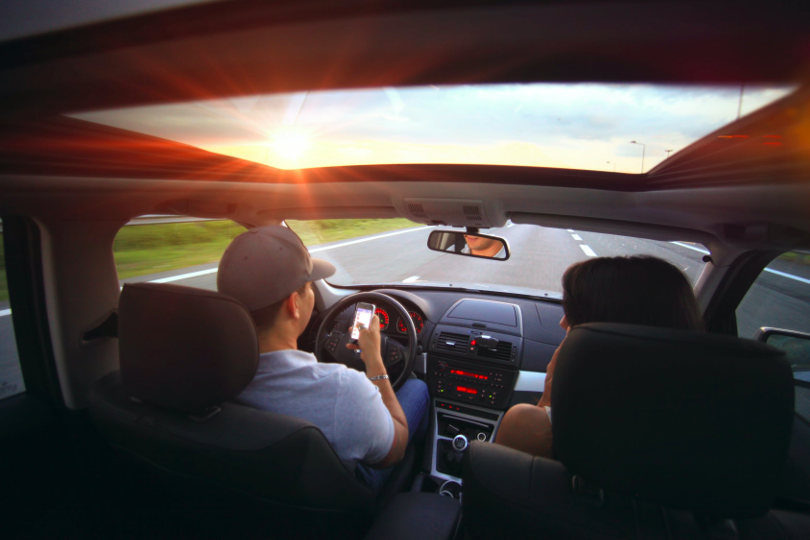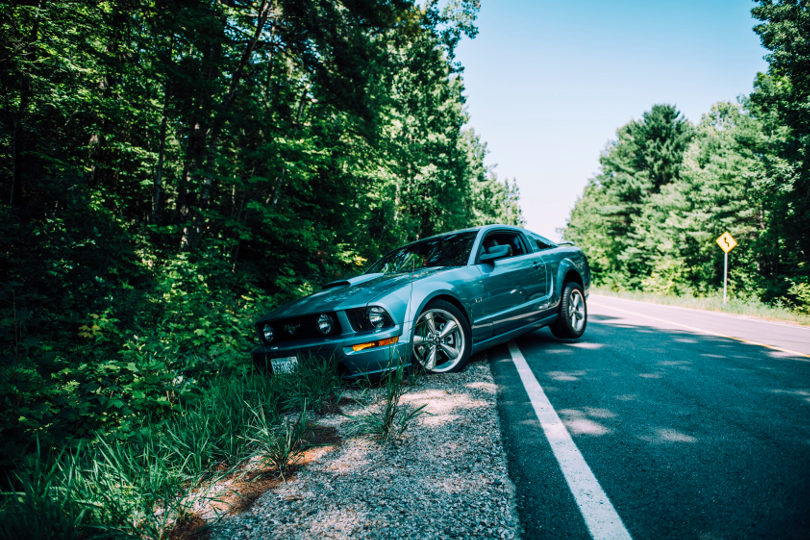In recent years, there has been an increase in distracted driving due to the availability of handheld technology. Having become accustomed to constantly having a smartphone in hand, it is no surprise that individuals find difficulty in putting phones away before preparing to drive a vehicle.

However, distracted driving is not limited to only handheld technology use; distracted driving includes any behavior that would divert or take away one’s attention from the road.
Eating, applying makeup, looking around, fussing with the stereo system, or perhaps reaching for something that may have fallen are all things that could take a driver’s eyes off the road. These behaviors can be very dangerous, especially when the driver is traveling at high rates of speed, such as on a highway or major roadway.
Many states have enacted certain laws in an effort to prevent and deter drivers from driving while distracted. While these laws may vary from state to state, most states and many U.S. territories do have some law regarding device use while driving. This variation can possibly be confusing for people because some states may allow handheld device use for navigation, where others could have a full ban on device usage within the vehicle while driving.
Classifications of Distracted Driving
There are laws pertaining to distracted driving caused by handheld phone use that can mostly be divided into three main categories. Handheld cell phone use is banned in 22 states, as well as D.C., Puerto Rico, Guam, and the U.S. Virgin Islands. This means that drivers cannot have a cell phone in their hands, but hands-free features such as Bluetooth are acceptable alternatives.
All of these are “primary enforcement” laws, meaning that an officer can cite someone for only using a handheld device, even if they are not violating any other traffic laws at the time.
There are no states that have a full ban on any cell phone use; however, there are 37 states that completely ban any cell phone use for novice drivers. In 23 states, D.C., Puerto Rico, Guam, and the U.S. Virgin Islands, have a complete ban on all cell phone use for school bus drivers.
Lastly, texting while driving is prohibited in 48 states, D.C., Puerto Rico, Guam, and the U.S. Virgin Islands. ll but three of these states have primary enforcement of this law, in which the driver can be fined for texting and driving alone. One of the two states that do not ban texting while driving does have a ban on texting for novice drivers behind the wheel.
Cell Phone Use and Crashes
While most of the U.S. has some form of law about cell phone use while driving, it is unclear whether this has done anything to reduce crashes. According to the Insurance Institute for Highway Safety (IIHS), there is still mixed evidence on whether or not talking on a cell phone in fact increases a person’s risk of crashing.
It is difficult to gather statistics on whether a crash is caused by a person who was distracted because drivers are unlikely to provide that information to authorities.
Results from studies analyzing the correlation between handheld device use and subsequent accidents are unclear. Three studies conducted which continuously monitored 3,000 drivers’ behavior primarily showed that the risk of crashing was increased for drivers aged 16-29 when participating in phone conversations. Alternatively, other studies have found this not to be a strong contributing factor to crash risk.
However, it is reasonable to conclude from the results of all studies that texting or manipulating a cell phone drastically increases the risk of an accident. The same continuous study which monitored the driving behavior of 3,000 motorists reflected that when manipulating a cell phone, drivers’ risk of an accident was 2-6 times higher than when not distracted.
Research also shows that texting or manipulating a device while driving significantly affects reaction time. On average, a driver looks away from the road for five seconds at a time while texting or using their phone. When a driver is traveling at 55 mph, this equates to driving the full distance of a football field without looking at the road. In that distance, a number of things can happen that require an instant response to prevent an accident.
“While study results are mixed about the use of cell phones in the car while driving as it pertains to crash risk, it is best to avoid it anyway.” says lawyer Karin Riley Porter. “It is still the law and you can be pulled over and you can be fined for it. This is never a good thing to have on your driving record. It is best to err on the side of caution and use hands-free technology in your car, or wait until it is safe to pull over and use your phone.”

Distracted Driving and Liability
While on the road, drivers owe a “duty of care” to themselves and those around them. Remaining as alert as possible behind the wheel of a vehicle should be made a priority. If it is proven that a driver was texting or otherwise distracted by a device behind the wheel, they can be held liable for the damages caused by their actions.
Multiple types of damages can be present in the case of a distracted driving crash. The damages will be determined by lawyers if a lawsuit is filed.
There is the property damage suffered to other cars, property that a driver may have crashed into, their own car. There are also medical costs if someone were to be injured as a result of the crash. They might have to be transported to the hospital, receive treatment, or even on-going treatment if the injury they sustained is serious. A driver could be held liable to pay pain and suffering as well for anyone who has suffered loss and damage as a result of their actions.
Driving distracted can be very costly and also cause great harm. It is important to practice safe driving at all times, pull over to use a cell phone if necessary, and minimize talking on calls even when using a hands-free function. Doing so could save drivers from a hefty fine, an unsavory driving record, and a serious accident.







